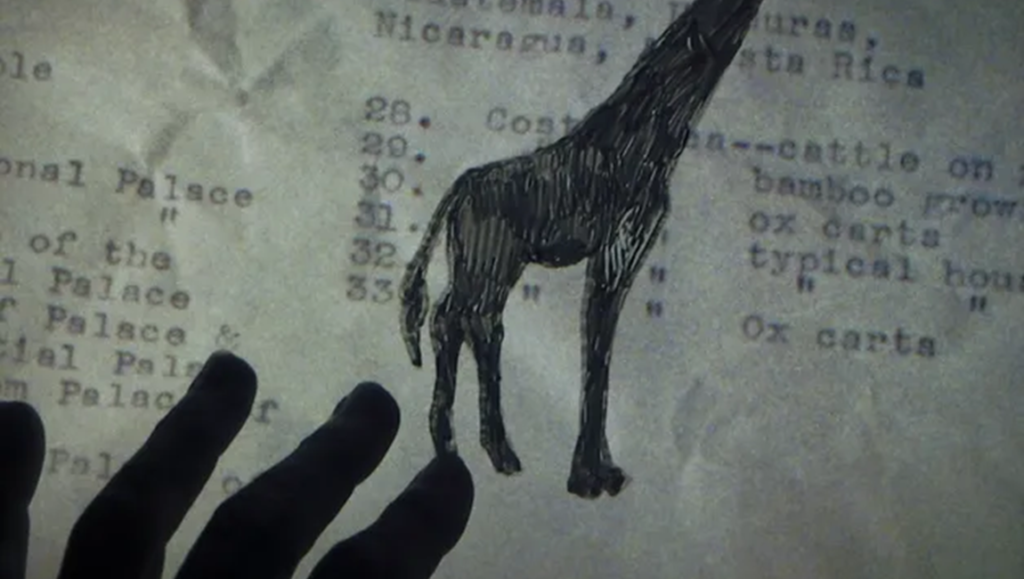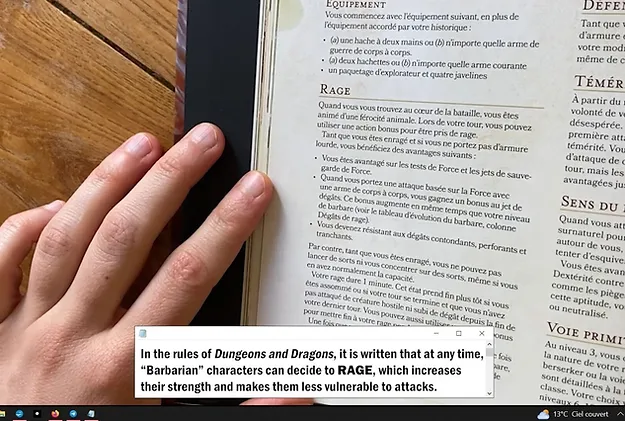Now in its third consecutive year, the Light Matter Festival has become a major East Coast showcase for experimental film and video, presenting a diversity of styles and approaches rivaled only by San Francisco’s Crossroads Festival. Based in the south-central New York town of Alfred, Light Matter was founded and is curated by Alfred University professor James Hansen. He is part of the newer generation of programmers and scholars for whom the importance, even the centrality, of experimental media is taken for granted, rather than a political position that must be defended over and over again.
The sheer variety of Hansen’s programming suggests that he, like many of us, believes that the rapid obsolescence of cinema as a mass entertainment represents less of a crisis than an opportunity. With narrative film losing ground to tentpole spectacles, gaming and interactivity, and web-based media keyed to the malleable attention spans of ever-younger audiences, the rules are constantly being rewritten. Hierarchies are coming unstuck, and the long-assumed marginality of avant-garde media may soon be a thing of the past. After all, data networks have no margins, strictly speaking — only coterminous nodes.
The expansive nature of Light Matter’s programming is inspiring, and even a bit daunting. I have only scratched the surface of this year’s program, and the lineup features an impressive roster of newer artists with whose work I am completely unfamiliar. This is always an exciting turn of events, since I do try to keep tabs on this field, and the fact there is so much more activity than I’m aware of is reason for optimism. But of course, discovery takes effort. And so while I still have a lot of delving to do, here are some of the most compelling films I’ve found so far.
For years, Buffalo-based filmmaker Laura Kraning has been practicing a unique form of environmental cinema. Many of her films focus their attention of specific locations — L.A.’s Terminal Island in Port Noir (2014), a vast array of solar panels in Irradiant Field (2016) — and provide the viewer with a cognitive map of those places, allowing us to understand how their components fit together and also how that space is the culmination of particular historical threads. In her newest film, de-composition (2023), Kraning takes a somewhat different tack. In just under three minutes, de-composition presents a rapidly shifting series of images that document the oxidation process.
Using mostly close-ups, Kraning displays rust at work, breaking down various industrial objects while giving them an abstract, painterly tinge. Gratings, beams, and panels all show the toll that has been taken by the elements. Bulging bolts and flaking surfaces testify to the action of time. We partly see the fading away of dyes and lacquers, with canary yellows and metallic teals giving way to various umbers and ochres. But Kraning’s editing also shows us the sheer variety of hues generated by this natural process. At times we see white paint spots or scratch-marks, and it becomes difficult to be sure which elements are on the surfaces of the metal samples and which are on the celluloid itself. While Kraning’s organizational approach recalls some of Jodie Mack’s recent Wasteland films, de-composition harkens back further to Brakhage’s classic Mothlight (1963). Like that film, de-composition activates the labor that cinema produces, making visible the way that decay permits the flourishing of new sensual possibility.
In his first English-language film Providence (1977), Alain Resnais has his protagonist aver, “I detest violence. It reeks of spontaneity.” In her new film I Would Like to Rage, French film-essayist Chloé Galibert-Laîné considers the problem of anger and its presumed connection to primal human states. As her starting point, Galibert-Laîné takes the role-playing game Dungeons and Dragons. In particular, a web program called “Critical Role” featured a group of friends playing the game together, with the program gaining a significant following. While most of the players chose to dramatize their characters’ emotions, one player took another route. His character was a barbarian, and per the rules of D&D, he could “rage” at will. Instead of shouting or flipping the table, he simply announced, “I would like to rage.”
Galibert-Laîné considers the fact that “rage” becomes a sort of self-defining speech act. One need not perform the emotion; one need only announce its existence, and one’s intention to wield it. The filmmaker then starts questioning her own relationship to anger, as well as her attempts to represent it in her art. She finds that she is unable to “rage,” and this prompts her to ask exactly why that is. Using her specific video-essay aesthetic, which frequently involves onscreen text typed in real time and the assembly of multiple browser windows on a visible desktop, Galibert-Laîné articulates the complicated relationship between emotional performativity and “genuine” affect, which in turn asks us to consider the distance between the feelings that an artist channels into the making of a work of art and the emotions apparently displayed in the work itself. Is rage always a mere simulacrum of itself?
Muted Bridges, the rigorous, puzzle-like film by Yan Wai Yin, would play very well alongside one of Simon Liu’s recent films. Like his recent film Let’s Talk (2023), Muted Bridges is a study of unremarked absence. Yan’s film offers a structural deconstruction of five city bridges and the space around them. This being Hong Kong, each of these bridges was very recently covered in pro-democracy graffiti or wheat-pasted with protest bills. Now, not only is there no trace of what was there before; to all appearances, the bridges are brand new, unmarked by time or human use.
Yan’s film exhibits the constructivist sensibility of Tomonari Nishikawa, although she takes that formal approach in a somewhat different direction. Her framing and organization coax us to look beyond the objects in the image, to consider history and politics as the negative space that cannot be directly visualized. Before the democracy protests, these rather nondescript bridges were probably not thought about very much. They are conduits, not destinations. And yet, Muted Bridges suggests that they have a very different social meaning now, as emblems of the eradication of public discourse and, to a tragic extent, the people who stood against Mainland tyranny.
For nearly 30 years, Milwaukee’s Stephanie Barber has produced dozens of innovative and well-nigh indescribable films and videos, ranging from a few minutes to feature-length. Barber’s work has not always been in fashion, since her concerns tend toward the philosophical and the absurd. There is nothing straightforward or didactic about Barber’s work, despite its consistent engagement with issues of gender, social discourse, and the slippery nature of cinematic representation.
In one of her better-known works, 2000’s Dogs, Barber has a couple of folded-paper canine hand puppets converse about the uncertain nature of reality. Her newest film, The Enlightenment, consists of a dialogue between two bears, Yon and Payola. They both appear as pencil drawings on transparencies, moved around by visible hands. Their conversation veers from the ontological — are they inside or outside, and how would one tell? — to the bitterly prosaic (“sometimes your stupid mouth makes me want to backhand you”). Payola has been researching the Enlightenment, and wants to share her “epic text” with Yon.
After shuffling through sheaves of papers with bizarre lists and numbers, the bears redefine enlightenment by giving the viewer a series of shots in which lamps suddenly switch off, leaving the screen completely dark. Like so many of Barber’s best films, The Enlightenment foregoes the indicative mode, favoring the unstable syntax of modern poetry. Like the other films mentioned in this survey, The Enlightenment exemplifies the radical ethos of Light Matter. This festival regards experimental media less as a genre and more as an open question, a form whose identity only flickers into being at the moment when the light hits the screen.




Comments are closed.